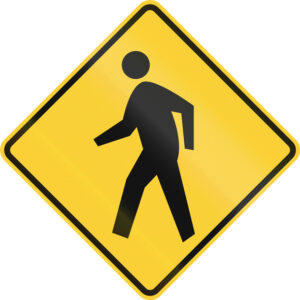I was 57. I had just separated from my partner of over 20 years. I had moved in with my mom in her rather small apartment. I was away from my dog. We were a year into the pandemic. Work was more stressful than normal. I was trying to work through some childhood trauma with a therapist. I was emotionally exhausted.

One day, I just set off walking. I didn’t walk because I read I should or because I wanted to exercise or lose weight. I walked because I had to. The turmoil inside my body, mind and heart compelled me to move. And walking was the way I chose to move. I began walking daily. And with every walk, I felt like I was somehow cleansing the trauma that was living inside me. If I skipped a day, I could feel more of it creeping back in. It was as if I had skipped a dose of medicine.
And then, I happened to run across Brené Brown’s podcast interview with Emily and Amelia Nagoski, the authors of Burnout: The Secret to Unlocking the Stress Cycle. Here’s a summary of some of the key points of the podcast and book.
- “Emotions…involve the release of neurochemicals in the brain, in response to some stimulus.”1
- They have a beginning, middle and end. They are like a tunnel.
- If you move all the way through the tunnel, great! But if you don’t do something to complete the cycle of the emotion, you get stuck in the tunnel and the chemicals created by that emotion get stuck in your body.
- They call this completing the stress response cycle.
This was a huge “a-ha” moment for me. It dawned on me that I had years of all of these incomplete cycles resulting in stress accumulating in my body. And with the recent stressors, I was emotionally tapped out.
The authors go on to describe ways you can complete the stress response cycle. And the most efficient they say is physical movement. Yes! That’s why my walking truly felt like it was saving my life. It was!
They also describe other ways to complete the cycle. Here is the full list.2
- Physical activity
- Breathing
- Positive social interaction
- Laughter
- Affection
- Crying
- Creative expression
So if walking or physical activity is not your thing, there are other ways to complete the cycle.
Toward the end of the podcast, Brené asks the authors how you know if you’ve completed the cycle. They respond that “you feel it in your body.” I definitely felt different after a walk, but I’m not sure I felt like I had completed a cycle. It was more like I was just keeping myself from drowning in it all.
In the podcast, Brené goes on to read from the book:

“Don’t worry if you’re not sure you can recognize when you’ve ‘completed’ the cycle, especially if you’ve spent a lot of years, like your whole life maybe, holding on to worry or anger. You’ve probably got a whole lot of accumulated stress response cycles spinning their engines, waiting for their turn. So it’s going to take a while before you get through the backlog. All you need to do is recognize that you feel incrementally better than you felt before you started. You can notice that something in your body has changed, shifted in the direction of peace. If I was an eight, at an eight on the stress scale when I started and I’m a four now, you can look at yourself and say, ‘That’s pretty good.’”3
It’s going to take me a while to get through the backlog. But for now, I’ll keep walking.
(I went on to read the entire book. I highly recommend it.)
My grandmother started walking five miles a day when she was sixty. She’s ninety-seven now, and we don’t know where the heck she is.
Ellen DeGeneres
- Nagoski, Emily; Nagoski, Amelia. Burnout (p. xii). Random House Publishing Group. Kindle Edition.
- Nagoski and Nagoski. (pp. 14-18).
- Nagoski and Nagoski (pp. 22-23).